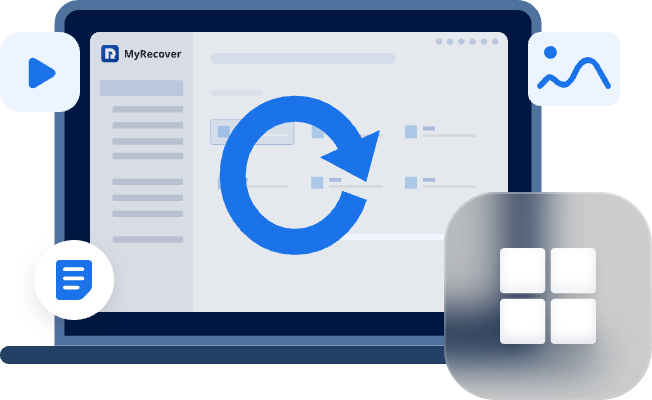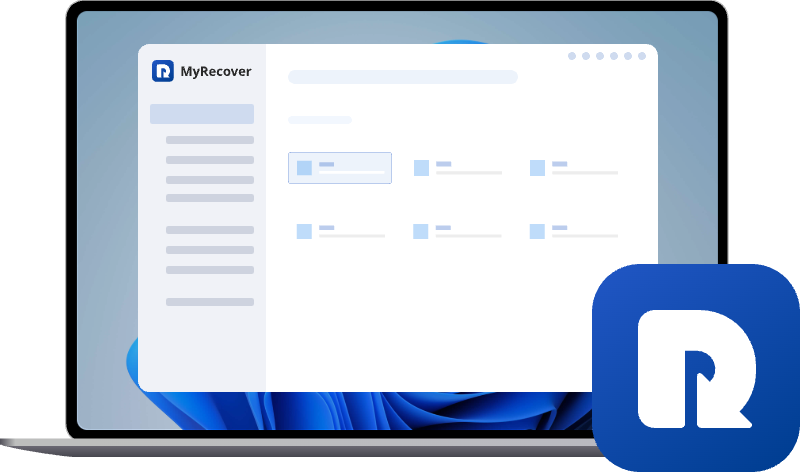Seagate External Hard Drive Files Disappeared? Recover Them Now
This guide will walk you through the potential reasons why your Seagate external hard drive files disappeared and also cover how to recover hidden or lost files using effective and proven methods.
Preview
A whole folder on my seagate external drive has disappeared. Please help!
I mainly use the drive for music and had a folder dedicated to specific Logic Pro project files. I am completely unsure whether this is erroneous deletion or another error but there is no damage or fault with the drive. So far so disastrous. Here are the questions I have. Is it possible for me to recover the files if they have been erroneously deleted etc.? Is there a way for me to view all of the transactions of data from and to the drive so I know exactly what is missing? Any help would be immensely appreciated. I have spent MONTHS creating this music (even though it's only part of my work it feels like a lifetime). Thanks.
- Question from Aries George
Seagate external hard drives are widely used for their reliability and large storage capacity, but what happens when the files on your Seagate drive suddenly disappear? It can be a panic-inducing situation, especially if the data is critical, such as documents, photos, or important project files. This issue can occur for a variety of reasons, ranging from accidental deletions to technical glitches or malware infections.
The Potential Reasons Why Seagate External Hard Drive Files Disappeared
Before diving into the recovery methods, it’s important to understand why your Seagate external hard drive might be showing up empty or the files may appear to have disappeared. There are several potential causes for this issue:
🧿Accidental Deletion
Sometimes, we mistakenly delete files without realizing it, or they may have been moved to the Recycle Bin by accident.
🔔File System Corruption
External drives are more susceptible to file system corruption, especially if they were improperly ejected, or there was a sudden power failure during data transfer.
💻Virus or Malware Infection
Malware can sometimes hide your files, or even corrupt them, making it seem like they are missing. Some types of malware disguise themselves as file names, hiding in plain sight.
💽Drive Errors or Bad Sectors
Physical damage or logical errors on the Seagate drive can cause files to become inaccessible or lost. Bad sectors are common in older drives or those that are physically worn out.
📂Drive Letter Conflict
If your Seagate drive’s letter conflicts with another drive on your system, it might not display its content correctly in File Explorer.
How to Fix the "Seagate External Hard Drive Files Disappeared"
Understanding the cause is essential for determining the appropriate solution. Now, let's move on to practical steps that can help you recover your missing Seagate files. There are several solutions you can try to return your lost files from a Seagate external hard drive. You can try them one by one until your files show up again.
Solution 1. Show Hidden Files
In some cases, your files may not be deleted, but instead, they might be hidden. You can try to make hidden files visible on your Seagate drive.
Step 1. Press "Win" + "E" to open File Explorer and click on the "View" tab, then select "Options".
Step 2. Under the "View" tab, tick the "Show hidden files, folders, and drives" option. If your files are system-associated, you may also uncheck the "Hide protected operating system files (Recommended)" option.
Locate your Seagate external hard drive and check for hidden files if it's accessible.
Solution 2. Use the ATTRIB Command
Sometimes files become hidden due to system settings or malware, and you can recover them using the ATTRIB command in the Command Prompt. This command allows you to change the attributes of the files and make them visible again.
Step 1. Locate Command Prompt in the Start menu and run it as administrator.
Step 2. Type the following command "attrib -h -r -s /s /d E:\*.*" and hit the "Enter" key. Replace the drive letter "E" with your Seagate hard drive letter.
This command will remove hidden, read-only, and system attributes from the files on the drive.
Solution 3. Change Registry Editor Settings
If neither of the above two methods works to locate the hidden files, you may also adjust the hidden settings through the Registry Editor to show them.
Step 1. Press "Win" + "R" and enter "regedit" in the Run dialog, then press "Enter" key to open it.
Step 2. Navigate to the path:
HKEY_CURRENT_USER\Software\Microsoft\Windows\CurrentVersion\Explorer\Advanced
Step 3. Double click "Hidden" and change the value data from "2" to "1" for showing the files and folders, then click "OK" to save the changes.
Step 4 (Optional). If your files are protected operating system files, locate "ShowSuperHidden", double-click it, and change the Value data to "1".
Step 5. Close the Registry Editor and restart your PC to check if the files are visible.
Solution 4. Scan for Malware
Some malware is designed to hide your files by changing their attributes or placing them in hidden folders, and may even delete your important data, making it unreadable or lost entirely. Windows Defender (the built-in antivirus tool for Windows 10 and 11) helps eliminate this malware.
Step 1. Open File Explorer and right click on your Seagate external hard drive, choose "Scan with Windows Defender" from the context menu. This will perform a quick scan for the whole drive.
Step 2. If malware is detected, remove or quarantine it and try accessing the files again.
Step 3. If needed, after the quick scan completes, click "Full scan" to perform a more comprehensive scan.
Solution 5. Run CHKDSK Command
File system errors can also hide your files or even cause files on your Seagate hard drive to disappear. The CHKDSK command can be used to detect and repair logical errors such as file system issues. Here's how:
Step 1. Open Command Prompt and run it as administrator.
Step 2. Type the command "chkdsk G: /f /r" and press "Enter" key. Replace the drive letter "G" with your Seagate hard drive letter.
Then, the command will automatically scan and fix any detected error. Once completed, check the drive to see if the files are recovered.
Solution 6. Use MyRecover to Restore Lost Files
If none of the above methods work or the files still disappear, it may be because the files have been deleted. In this case, a professional data recovery tool would be a good choice. MyRecover comes highly recommended. It is specifically designed for various complex data loss situations like emptied Recycle Bin, deleted partition, formatted SD card, unreadable drives, etc.

- Intuitive interface requiring no technical expertise.
- Faster scanning compared to command-line tools.
- Higher success rate for permanently deleted files.
- Compatible with all Windows operating systems.
Step 1. Download and install MyRecover on your computer from Microsoft Store, avoid installing it on the Seagate drive with lost files.
Step 2. Run MyRecover and select the Seagate external hard drive to scan, then click "Scan".
Step 3. Choose the files you would like to recover from the recoverable lists and click "Recover".
Step 4. Select a safe location (different from the original one) to save the recovered files.
Once the process is done, the message "Files have been recovered successfully" will pop up. Then you can check the recovered files in the destination folder path by clicking on the "Browse" button.
The End
While it can be frustrating when Seagate external hard drive files disappear, the good news is that in most cases, the data is recoverable. Whether the files are hidden or deleted, use CHKDSK, or turn to a dedicated recovery tool like MyRecover, there are multiple ways to restore your data.
For those who want a more advanced features, MyRecover Professional edition supports unlimited data recovery capacity. Its file preview feature allows you to check the files content before the recovery process, and it's an excellent choice for recovering files that seem permanently lost.


